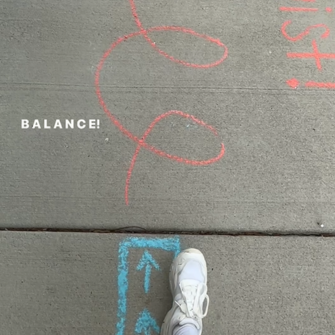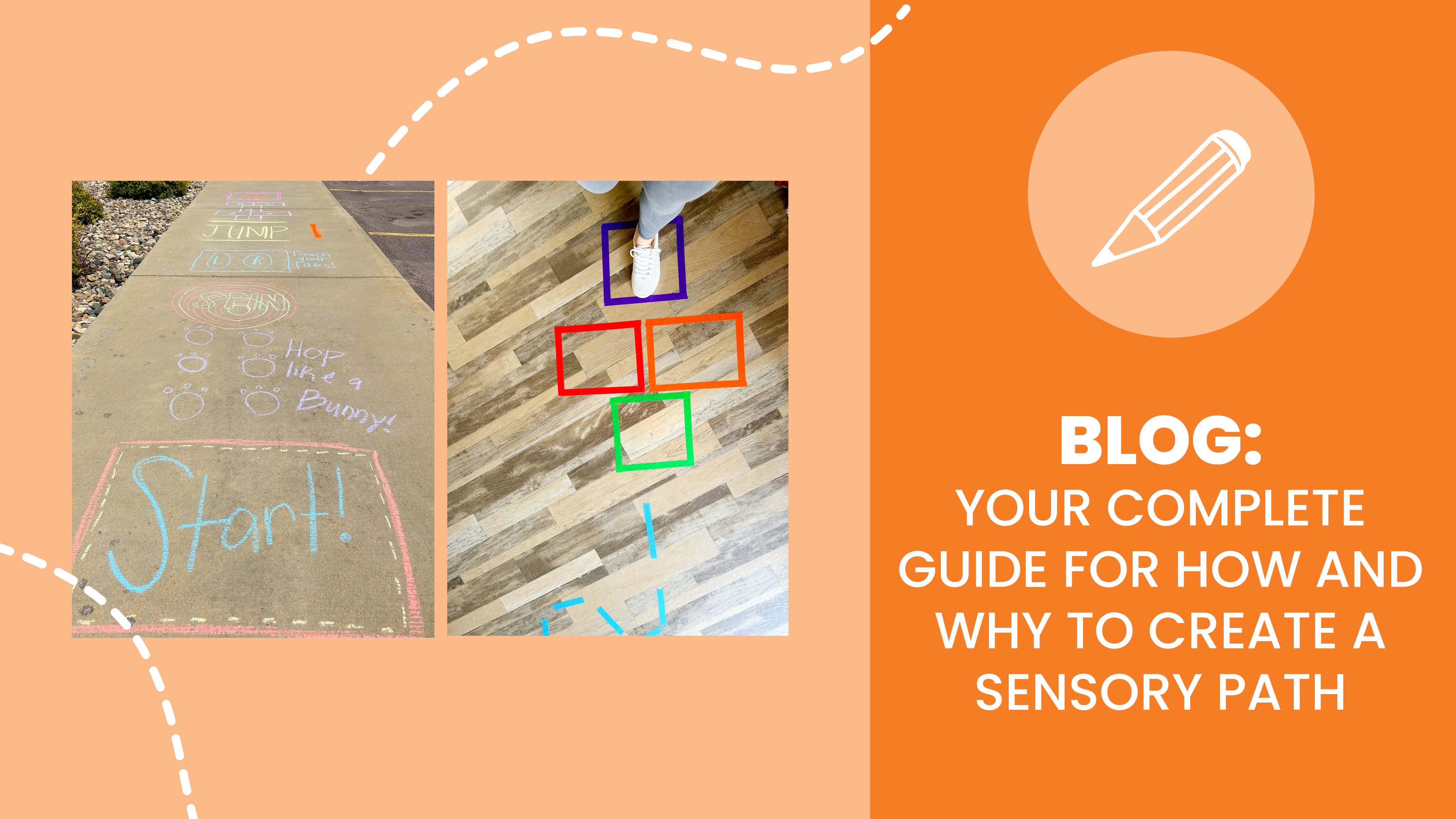Have you ever noticed how a little bit of physical activity can refresh your kids’ body and brain? Or have you noticed that kids can learn while they move?
If you’re looking for a way to accomplish recharging while moving and learning, sensory paths might just be your answer!
What are sensory paths? Sensory paths are a series of guided sensory-motor tasks for kids to follow, shown by markings on the ground or walls. They often incorporate stickers or posters with simple instructions to help kids complete tasks along the way.
Why use sensory paths? The goal is to provide kids with a fun and unique opportunity to learn while they move! Sensory paths can also serve as a brain break, improve spatial awareness, engage hand-eye coordination, release some excess energy, and as a positive copy strategy to aid in emotional regulation.
Not only do kids enjoy them, but sensory paths also improve and build skills such as:
- Educational Skills
- Counting and numbers
- ABCs
- Colors
- Shapes
- Lefts (L) and Rights (R)
- Gross and Fine Motor Skills
- Balance
- Hand-eye coordination
- Hopping (one or two feet) and leaping
- Spatial awareness
- Emotional Skills
- Identifying emotions
- Positive coping strategies
For adults, sensory paths are a great tool because they require minimal instructions and can last longer than a day or even a week. Your kids can use a sensory path all year long!
How can I make a sensory path?
If you take time to browse the internet, you can quickly see that sensory paths can be spendy. But, the good news is that you can create a sensory path on the floor or walls with ordinary items that you may already have on hand!
- Chalk – it’s a great option for the outdoors, especially! Plus, it gives kids the flexibility to draw, write, and create their own path.
- Floor mats – these can include yoga mats, rugs, foam mats, or any other kind of material for the floor. No matter the material, mats are ideal for indoor sensory paths and provide a less permanent option that you can easily pick up and store when not in use. Just adhere your sensory path pieces to the floor mat and use them whenever you’d like!
- Colorful tape – this is a great, flexible option for hard flooring, carpet, or paired with a sensory path on a wall. With tape, you can make the path as permanent as you’d like by keeping the tape on the floor for weeks at a time or you can change the path whenever you’d like. Best of all, it’s cost-effective too!
- Incorporate fun textures – get creative and find items around your home or office that your kids would find interesting. Bubble wrap, carpet squares, foam mats, cones, or blocks are all great options!
- Paper and markers – let your kids get creative! Have them draw their favorite animals. Then, find fun facts about their favorite animals and write them next to their drawing. When doing the path, they can learn about their favorite animals and imitate their movements and sounds.
- ‘Tis the Season – Use the holidays and seasons to change up the sensory path or inspire yourself to make one. You can use hearts for Valentine’s Day, snowflakes during the winter, or flowers in the spring – the options are endless!
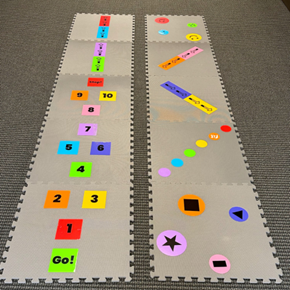
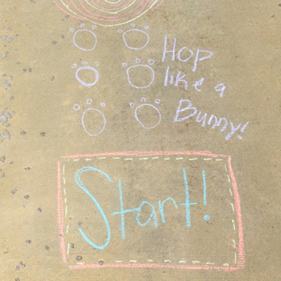
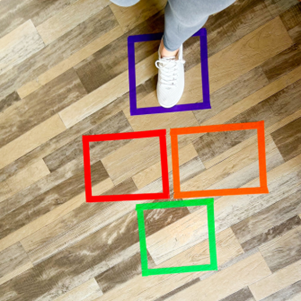
When and where can sensory paths be used?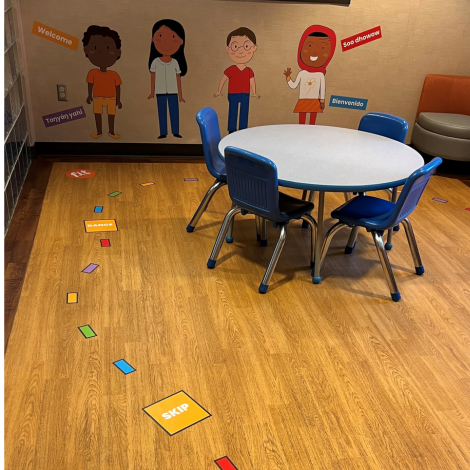
- Playgrounds and gymnasiums – talk to your school about installing a semi-permanent pathway on the concrete to use during recess!
- In your home on the floor – either the carpet, rug, or tiles work great!
- Your neighborhood – take some chalk and draw a sensory path on the sidewalk or at a nearby park. The best part, your neighbors can use it too!
- A hallway – this can be at home, daycare, or school. Either way, sensory paths work great for transition times when kids are between classes, rooms, or on their way to any activity! Think about one to use while waiting in line at the cafeteria!
- During a break time - According to a 2021 study from the National Institutes of Health, researchers discovered that our brains may replay compressed memories of learning new skills when we give our minds time to rest. Using a sensory path during a planned break time may help kids learn skills quickly and efficiently.
- Waiting rooms – engage children with play-based murals and pathways to create new opportunities for imagination in ordinary places.
Wanting some help getting started? Sanford fit has a huge collection of free printables to help you make a cute and educational sensory path. Just click below to get started!
fitBoost Cards: Print and use these movement activities throughout any space or use them as a center activity!
Positivity Posters: Print these posters and put them up as a reminder to practice positivity every day!
fitClub Move Activity Cards: Print and use these movement cards to show kids how they can move their bodies in many ways!
fitClub Recharge Activity Cards: Print and use these cards to show kids how they can take a moment to recharge their energy.
Healthy Choices Posters: Print and hang these posters to inspire your kids to make healthy choices!
fitGames – Motivation Station Cards: Print and use these cards to create different stations where kids can choose how they motivate their moods.
Grow Your Flow: Print and use these beginner yoga cards to help kids move their bodies and ease their minds!
Wellness Way Sensory Path Printable: Want a sensory path for moving and recharging that’s already created for you? Just print and hang these posters to make your path!
Wanting some video inspiration to get you started? Click below to get started!
